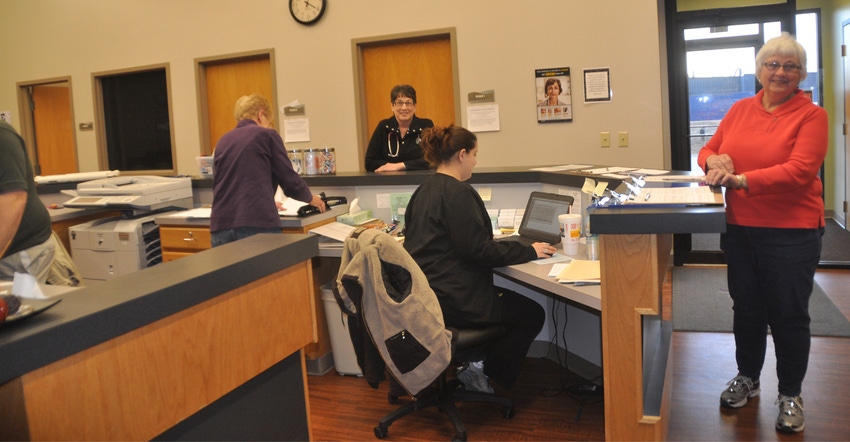February 7, 2020

Beth Ford, president and CEO of Land O Lakes, recently spoke at the Federal Reserve Bank of Minneapolis’ 2020 Regional Economic Conditions Conference, an annual economic outlook conference for the Ninth District.
“Farmers want trade,” Ford told the audience. “They want a robust marketplace and they want to compete. But the reality is we are in a disrupted environment through trade tariffs and other things.”
In her keynote address, Ms. Ford listed other notable benchmarks:
There is a critical shortage of doctors while one in four rural children are living in poverty.
Nearly 24 million people are without access to broadband.
Farm bankruptcies are at their highest level since 2011.
Even as our national economy is doing extremely well, agriculture is encountering multiple problems, including recovering from last year’s severe weather and flooding, not to mention enduring the latest down cycle in commodity prices and negative effects of the trade war.
Concluding her address, Ford described these conditions as a security issue for the nation, adding that investing in agriculture, our own food supply, is probably a good idea.
I would not argue with that, at all. But, therein lies the rub, so to speak. The devil is in the details on how we as an industry agree on what needs to get done, and when.
In addition to a doctor shortage, rural hospitals struggle to survive in an environment that does not provide revenue sources to maintain solvency, let alone prosperity. Thankfully, Gov. Laura Kelley and the Kansas Legislature have begun addressing part of that problem through expansion of Medicaid, a much-needed revenue source in providing care for those who need it most and can least afford it.
Immigration legislation reform is another critical piece of the puzzle. Amid all the hubbub and controversy regarding undocumented immigrants, it is noteworthy that, based on findings of the Council on Foreign Relations and the Migration Policy Institute, immigration numbers have only recently achieved parity in numbers in 2017, compared to the numbers arriving back in 1910-11.
From 1911, the percentage declined from slightly above 14% to less than 6% of the U.S. population in 1970, and then began an upward trend from there. Currently, immigrants comprise about 14% of the U.S. population, similar to 1911 numbers, and with their U.S. born children comprise about 27%.
Lack of available and capable manpower is a constant challenge in rural America. As the population ages and younger folks migrate to cities for better jobs, we cannot afford to allow immigration policy to stagnate and degrade even further. Although it may not completely halt the decline in rural America, it can and should be an integral part of rural revitalization. This must be met head-on, with forward-thinking state and national initiatives that have the bipartisan support of our citizens.
A false assumption that is too often quoted is that immigrants do not want to work and want to go on welfare. I need only to drive around my community and other towns and confirm this is not true. Immigrants man construction crews on major projects in our towns. They own their own businesses in roofing, construction, transportation, restaurants and services, and show their pride of ownership just like any other enterprising, hardworking citizen in the community. They are respectful neighbors, taking care of their homes and their families.
So, where do we go from here? It is a great question. Before addressing that, I do know what we should not be doing. It is not our government’s responsibility to take the initiative. That is up to us, the citizens; we, the people. The government then follows our lead.
One of the first comments I read on social media following the recent American Farm Bureau Federation’s annual meeting was, “Hey, let’s make the MFP payments permanent!”
No, the individual was not joking.
Instead, let’s restore strategic and trade relations with the nations we had prior to the trade war. Let’s move forward with the newly signed United States-Mexico-Canada Agreement, or NAFTA 2.0.
Let’s work to secure trade agreements lost due to the U.S. pulling out of the Trans-Pacific Partnership agreement.
Let’s capitalize on the newly signed American-China trade agreement and get those commodities moving and funds flowing.
Let’s get to work on restoring the rural landscape, improving the infrastructure, making every opportunity to improve the economic outlook so our grandchildren and their children will choose to live here, because they can have good jobs and raise families here, in Kansas.
Reporting from Marketwatch.com was used in this opinion piece.
Penner is a Marion County farmer and past president of the National Association of Wheat Growers. He can be reached by email at [email protected].
About the Author(s)
You May Also Like




